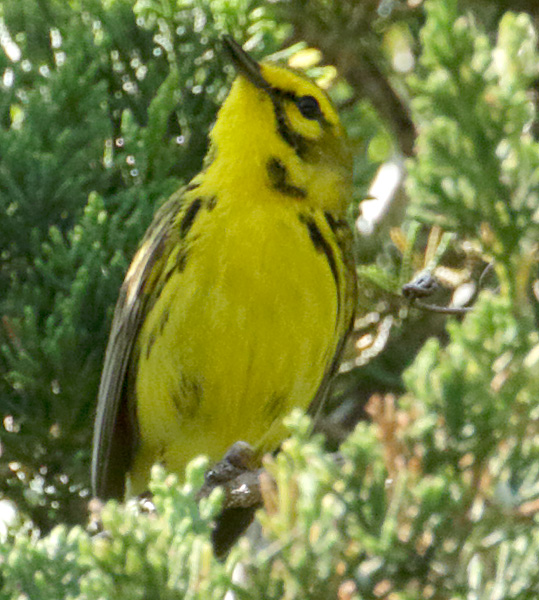
Prairie Warbler
New World warblers are my favorite North American avian species to photograph. Not only are they the most beautiful family of North American birds, especially in spring breeding plumage, they are some of the most difficult birds to photograph. Most of them are high up in the tree canopy, and rarely stay put for more than a few moments as they forage for insects. There are 36 warbler species that can be seen in central Virginia every year. I include Yellow-breasted Chat, even though it was moved out of the warbler family a couple of years ago, but was a member of this family for most of my birding. Some of the species are really difficult to find, and one of them, the Connecticut Warbler, is rare in the fall, and very rare, if not next to impossible, to find in the spring. Although I have seen and photographed all 36 warbler species here in central Virignia, I have never gotten all 36 in the same calendar year, but I attempt to accomplish this each year. The closest I have come to achieving this goal is 32 (2018). Prior to this morning, I was at 25. I also had photographed 4 other New World warbler species this year, but outside of Virginia.
Two of the warbler species that I usually have photographed before the end of May are the Prairie Warbler and the Canada Warbler, but so far, they have been elusive in multiple attempts. With this afternoon temperature forecast in the 90s and possible thunderstorms, I planned a three stop outing for the morning. Prairie Warblers have been reported for the past few weeks near the Zion Crossroads area of Lousia County, a Canada Warbler at Secluded Farm in Charlottesville last week, and Summer Tanagers, a species hard to find here, in Ivy located halfway between Charlottesville and where I live in Crozet.
I decided to try for the Prairie Warbler first. In June 2016, this species was "dripping from the trees (lots of them all along Valentines Mill Road)" in Louisa County, and not far from where they had been reported this year. So I went directly to that road, and in a few minutes, got my central Virginia warbler #26.

Prairie Warbler
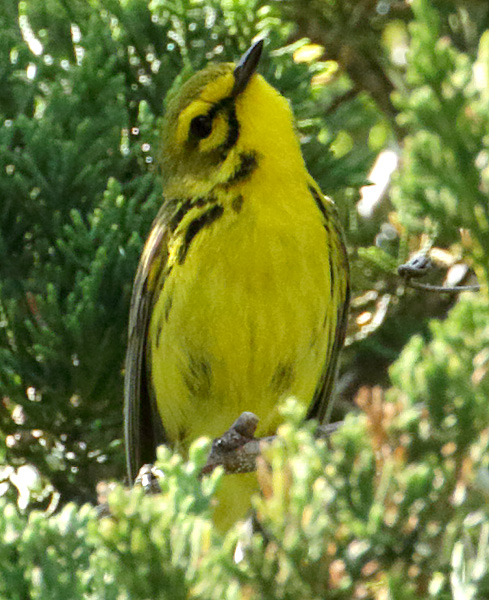
Prairie Warbler
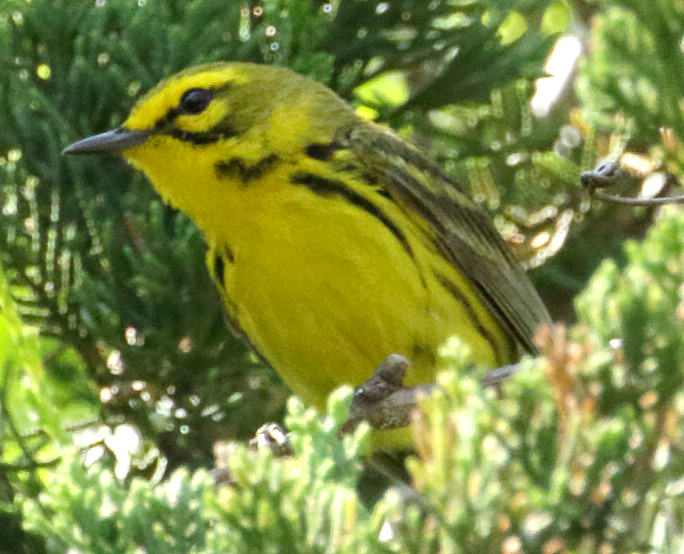
Prairie Warbler
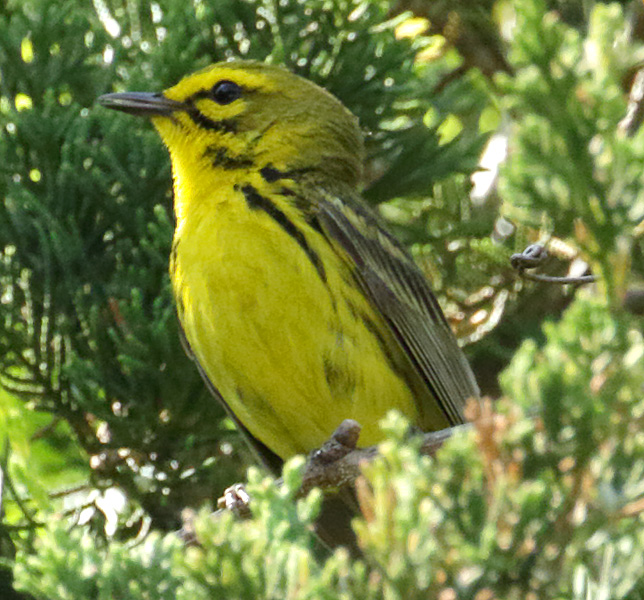
Prairie Warbler
While I only saw 1 Prairie Warbler, I saw about 10 avian species along Valentines Mill Road. I heard, but could not see, a White-eyed Vireo, and a Yellow-billed Cuckoo was close by, but flew before I could get a good photo, and I had to settle for a very distant shot.
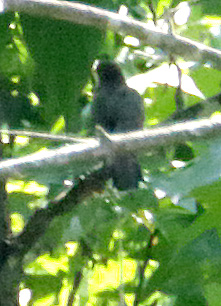
Yellow-billed Cuckoo
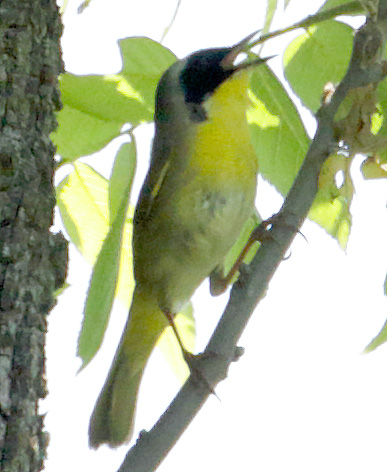
Common Yellowhtroat
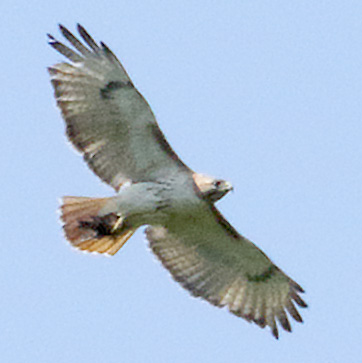
Red-tailed Hawk carrying a meal
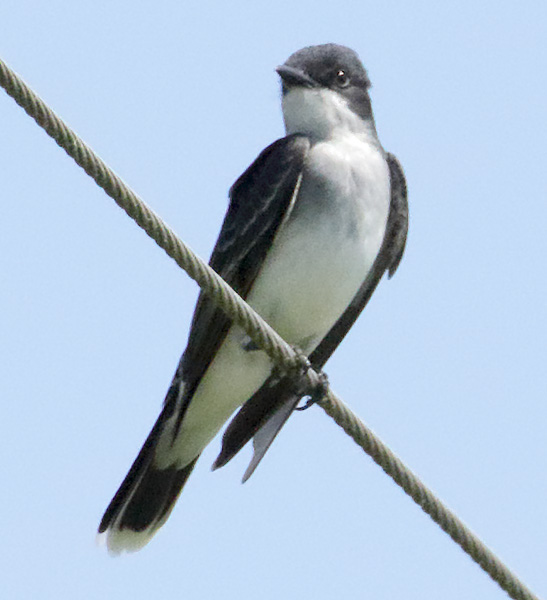
Eastern Kingbird
My next stop was Secluded Farm to look for the Canada Warbler. I didn't expect to find it, as this large area available to hikers and birders does have some wooded elevations, but the highest points there are about 500 feet, and Canada Warblers are usually at 2000+ feet. Secluded Farm is just off I-64 on my way back to Crozet, so it was worth a try. The one seen last week was probably migrating through. It was also almost noon and getting hot, so I didn't hike every trail there, and saw very few birds. But I have several spots in the Blue Ridge and Allegheny Mountains to look for Canada Warblers this summer.
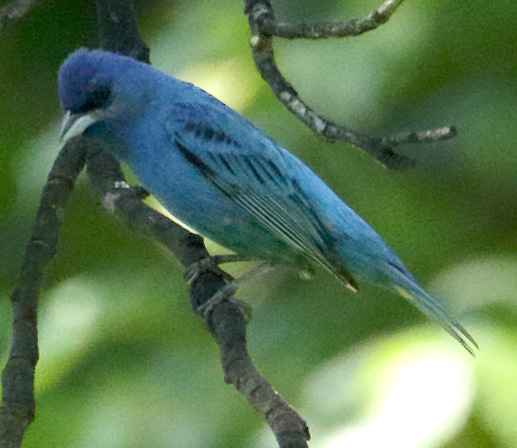
Indigo Bunting
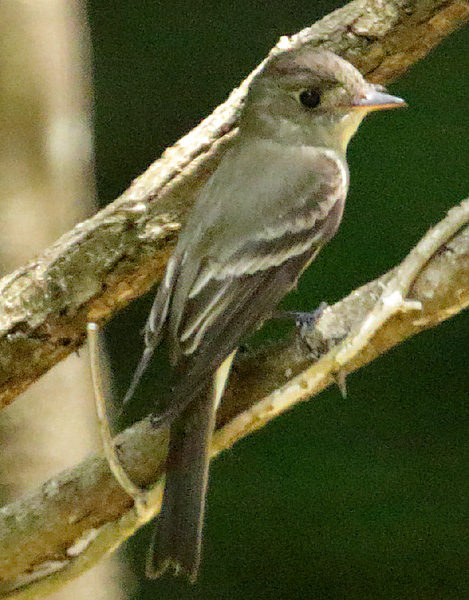
Empidonax Flycatcher
My third stop was in Ivy to look for the Summer Tanager. As soon as I got to the reported location, I could hear one singing high in the trees. I looked and looked, but could never see it. Oh well, 1-1/2 out of 3 target species wasn't bad.